As retail continues to rapidly evolve in this digital age, the need to reimagine shopping centers is greater than ever. The large size and central locations of retail centers make them great opportunities for redeveloping into new districts that integrate a variety of uses and create new urban districts and high quality community gathering spaces. Every location is different and requires its own unique set of solutions. As designers, we came up with eight ways to reinvent retail for a changing world. They include:
- Incorporate more food, beverage, and entertainment
- Create a real neighborhood by adding housing
- Provide a great public realm
- Make it bike-friendly
- Add and integrate medical, office, and hotels
- Include affordable housing
- Reconnect the street network
- Make it memorable
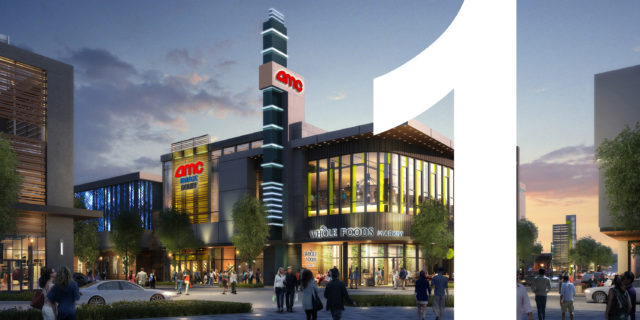
#1: Incorporate more food, beverage, and entertainment. Create more active and vibrant places centered around food, entertainment, and socializing. Provide activities and experiences that can’t be done online. This involves creating an overall higher quality environment and includes adding large outdoor dining areas, beer gardens, market halls, and providing flexible tenant spaces, pop-ups, and opportunities for food trucks.
An SGPA project that exemplifies this is the currently under construction Cityline Entertainment Block in downtown Sunnyvale, California. This project contains a 12-screen AMC Theater that sits atop of a Whole Foods Market. This building will anchor a new town square and be the entertainment centerpiece of a six-block mixed-use village on a former mall site. At the primary corner, large outdoor dining terraces spill out of the glassy 2nd floor theater lobby and the Whole Foods below to allow people to participate in and enjoy the street life of the city.
What are some recent trends involving entertainment in retail?
Glenn Wood: Creating a social space such a bar or lounge for people to watch participants of the activities such as indoor surf, climbing, or ice skating. The patrons doing the activities become the entertainment.
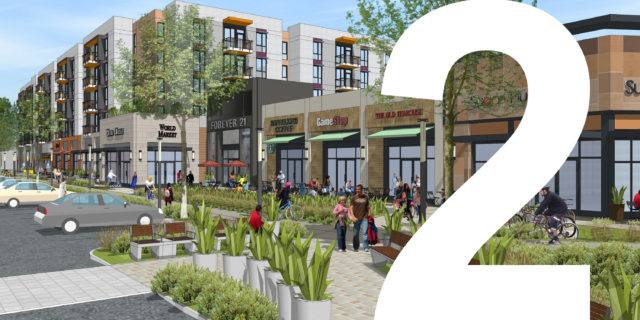
#2: Create a real neighborhood. Adding housing to retail centers provides life to the area throughout the day and night; as well as provides centrally-located compact housing close to retail, services, and jobs. Well-integrated housing transforms what was formerly a single-use center into a real neighborhood with a variety of uses, well-designed streets, and many destinations that are a pleasure to walk or bike to.
SGPA’s University Mall project in Davis, California brings new food and social spaces to a commercial center on the edge of the UC Davis campus. By weaving in 175 student residential units and 16,000 square feet of retail, this project creates a neighborhood center for students, families, and local residents to enjoy.
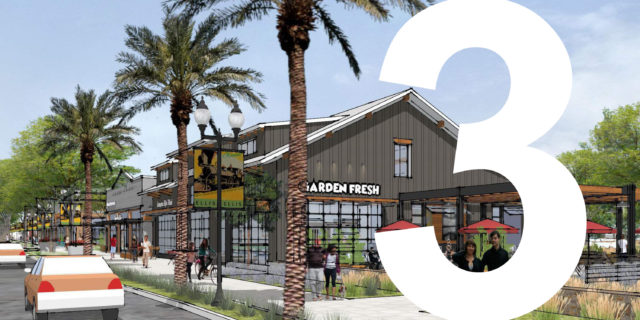
#3: Provide a great public realm. People want to shop, dine, and relax in areas that feel like a community – not an asphalt parking lot. Incorporating parks, plazas, and attractive streets with social spaces for outdoor dining and people watching can allow residents to enjoy a high quality and healthy lifestyle.
The Ellis Village Center is a mixed-use neighborhood in Tracy, CA. This multi-phased project includes a mixed-use retail village, a daycare, an aquatic park, a rec center, and a community library. The variety of uses are linked together with a network of tree-lined streets, neighborhood parks, and a central town square as the heart of the new neighborhood.
What would you say is the biggest trend you are seeing in recent Retail projects?
Glenn Wood: Creating great social gathering places by adding more food and beverage tenants with large outdoor dining terraces that integrate nature and green spaces.
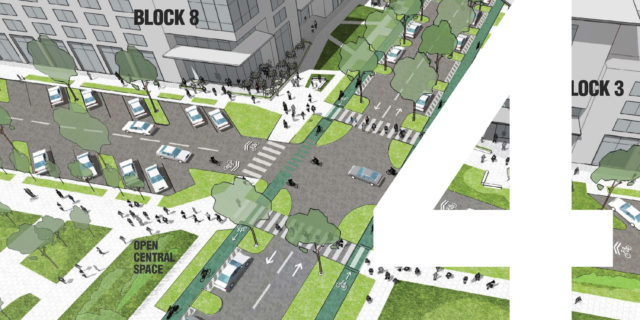
#4: Make it bike friendly. Designing streets and linear parks with protected bike lanes that connect to larger bike networks make it both convenient, safe, and enjoyable for adults and children to use bikes for leisure and day-to-day transportation. Convenient bike racks and bike locker locations encourage people to use bikes for everyday trips and errands and allows for a more physically active, low carbon, and higher-quality lifestyle for residents.
With the guidance and support of the various planning departments we work with, we are incorporating more and more bike amenities and bike-friendly infrastructure into our projects.
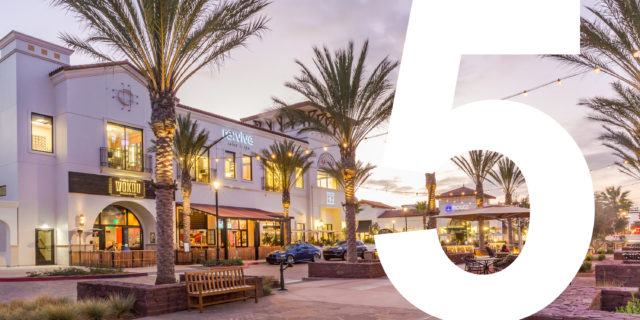
#5: Add and/or integrate medical, office, and hotels. Utilize hard to lease spaces with recreational uses such as: gyms, climbing walls, and sporting goods stores. Incorporating co-working spaces and health clinics bring convenience and diversity to the tenant mix. Redeveloping portions of retail uses into medical, offices, and hotels create a more diverse set of uses in the district. The retail in return benefits by gaining daily visitors and foot traffic. The new offices or hotels also benefit by having walk-able convenient retail, food, and gathering places they can patronize.
In San Diego, SGPA designed a project that encapsulates these ideas. Pacific Highlands Ranch is a 24-acre, pedestrian-friendly village center that combines affordable housing, retail, restaurants, gyms, and public spaces into one community.
Is there a perfect mix of uses in order to ensure a successful retail experience?
Glenn Wood: No, it depends on the location and the goals of the owner and community, but increasingly fitness and food uses are becoming a large proportion the mix.
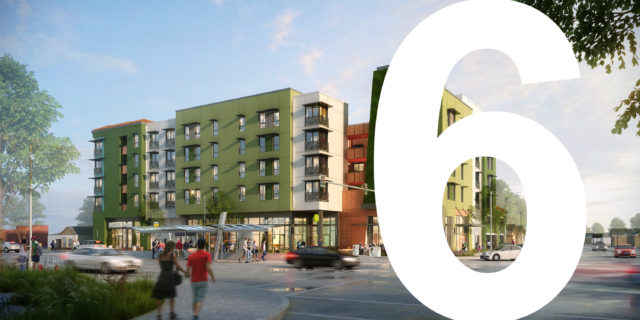
#6: Include affordable housing. Retail centers make great locations for affordable housing because of their central location and proximity to services and jobs. A wide variety of people from all income levels can enjoy the convenience and enjoyment of living in a walk-able mixed-use environment. Affordable housing developers are receptive to including retail and services on the ground floor of the buildings, so these projects can help anchor a new mixed-use district. With the state density bonus law and other recent streamlining laws, it is becoming easier and faster to entitle projects that incorporate affordable housing. For this reason, more market rate developers are integrating affordable components into their developments.
Quetzal Gardens is a 71-unit mixed-use, affordable family housing building that will help to transform its neighborhood in East San Jose into a walk-able, transit-oriented community. This mixed-use building on a new bus rapid transit line is replacing a commercial center and parking lot with residences over a large ground floor retail and commercial space facing a neighborhood plaza.
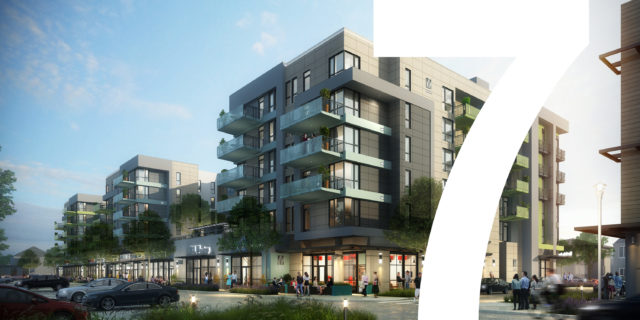
#7: Reconnect the street network. Many retail centers are large and span the size of multiple city blocks. Redevelopment provides an opportunity to remove large expanses of parking and create streets that connect with the adjacent street grid. This creates smaller, more walk-able blocks and better integrates the area with the larger community. New streets can be attractively designed with large shade trees and should carefully integrate landscaping, stormwater treatment, utilities, parking, sidewalks, and bike lanes. To bring life to the streets at the ground floor, units can have stoops and porches facing the street, while retail shops, entertainment, and restaurants can be grouped together to create a social heart for the community.
One of SGPA’s mixed-use projects at Westlake Shopping Center is in the first phase of what can eventually become a more walk-able, mixed-use retail village once subsequent phases are completed. The ground floor is designed for several large restaurants, shops, and food tenants with outdoor dining patios facing the street. In addition, the upper floors contain 179 market-rate rental units grouped around two landscaped courtyards.
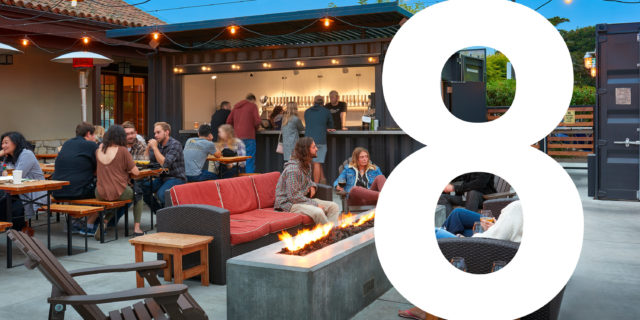
#8: Make it memorable. To compete with online retail, physical places particularly have to provide great experiences. It is important to create warm and comfortable places to gather and socialize around food and entertainment. Thoughtfully designing public art, more landscaping, better lighting, and higher quality architecture into the project can add beauty and life to our environment and create more memorable places.
In closing, we see retail centers as opportunities to build better cities and communities, provide much-needed housing options close to jobs, and strengthen retail to meet today’s needs. At SGPA, we enjoy collaborating with owners to unlock the unrealized value of every location. There is no single formula for reinventing retail, but by understanding the unique strengths and opportunities of each site and employing these ideas we can help open up exciting new possibilities.
We look forward to seeing you at the ICSC Western Conference next week in Los Angeles!
